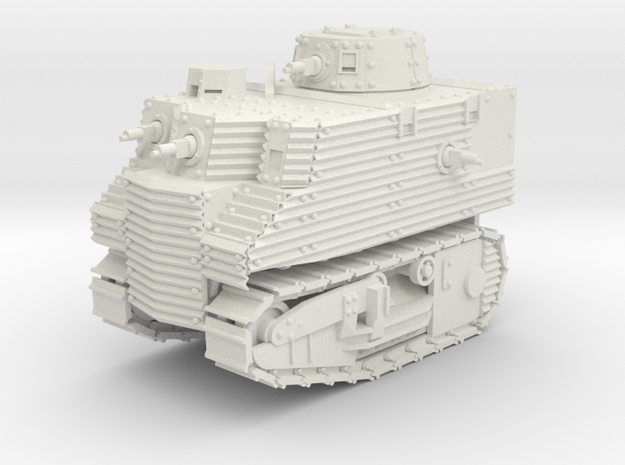Continuing with my experiments with Shapeways' Black Strong & Flexible (BSF) plastic after waterblasting all the extra crap away, now it's time to try out various surface treatments to see if I can ameliorate the crumbly, sponge-like surface. I assume that all this will also apply to white (WSF). Hopefully you can see the difference in the various treatments in the photographs.
I finished off by over-spraying everything in a pale grey primer, so that the differing colours wouldn't distract from the important thing, the surface texture.
First, I gave the Behemoth an all-over sealer coat of a Vallejo Surface Primer, brushed on. The porous surface really sucks up the paint, and the surface primer does little to fill the pores.
Over that, I tried various treatments:
Super-Glue Gel
This was terrible. You can see on top of the little sub-turret how it went all crufty and crinkled. I won't bother with that again.
- Addendum: I actually found that once the superglue had cured completely, it could then be scraped and sanded back to a very fine surface. So, not as useless as I had thought, though it would be a lot of work, so unless you value your time at only a shiny penny per hour, it's probably better just to get the thing printed in a higher-resolution material.
Gesso
I used a cheap black "craft" acrylic gesso by a company called FAS. Pretty much any acrylic gesso should give you similar results, but steer clear of anything with "impasto" on the label — those are designed to leave a brushed texture behind.
I applied it in one and two coats. It filled the surface pores well. It doesn't get rid of the surface texture completely, but I've had cast resin models that were as bad or worse than this.
It shrinks considerably on drying, so is unlikely to kill most detail, but you'd need to be a bit careful around anything you really want to preserve. This particular model isn't riveted (like most of the stuff I've done), so it's relatively easy to work with.
On the underside, I tried another couple of things:
PVA (Elmers Glue)
I just brushed the PVA on undiluted, and it smoothed out the surface pores very effectively. However, the resulting surface is a bit more woogly than a couple of coats of gesso.
Klear (Future) Floor Polish
This is a very thin self-levelling acrylic floor polish that I've mainly used for making Magic Wash. It has very little effect on the surface at all, probably because of its very low viscosity.
Conclusions
None of the treatments fixed the issue completely. There seems to be no easy way to get a surface anywhere near as smooth as the much more expensive stereolithography resins in this (relatively) cheap WSF/BSF sintered nylon.
However, of them all, two undiluted coats of gesso appears to be the most successful, and that's what I'll persist with until the price of high-resolution 3d printing comes down to a manageable level.










































